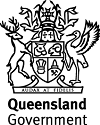Published Friday, 31 January, 2025 at 03:24 PM

Minister for Health and Ambulance Services
The Honourable Tim Nicholls
MEDIA STATEMENT: Hervey Bay Hospital first site for new statewide Telestroke Service
Hervey Bay Hospital first site for new statewide Telestroke Service
- The new Queensland Telestroke service will support approximately 2 million Queenslanders who live in regional, rural and remote areas.
- Hervey Bay Hospital has piloted the service which will be rolled out at additional hospitals across the state this year.
- The service enables time-critical, specialist assessment, diagnosis, and effective treatment for stroke patients.
The Crisafulli Government is investing $5.8 million each year to develop the Queensland Telestroke Service to ensure people in regional, rural and remote areas have the same access to stroke specialists as metropolitan communities.
The Telestroke model of care ensures patients can be treated rapidly, improving their quality of life and reducing their risk of long-term disability.
It also accelerates access to highly effective stroke therapies, such as clot dissolving drugs or clot retrieval procedures which require access to a stroke specialist.
Doctors and nurses at Hervey Bay Hospital underwent intensive training in care for stroke patients before the service launched in September 2024, with additional hospitals to be added to the service later this year.
More than 5,000 Queenslanders will experience a stroke for the first time each year and those living in non-metropolitan areas are 17 per cent more likely to experience a stroke than their metropolitan counterparts.
Despite this, these communities have less access to specialist diagnosis and treatment, making them more likely to have worse health outcomes.
Queenslanders in rural and remote areas were ignored by the Labor Government for almost a decade, but the Crisafulli Government is committed to ensuring all Queenslanders have access to world class healthcare through the delivery of the Easier Access to Health Services Plan.
Minister for Health and Ambulance Tim Nicholls said the development of the new Telestroke service will be a gamechanger in the diagnosis and care stroke patients receive.
“It is about supporting our local health heroes to be able to continue to do the incredible work they do, helping their local communities every day," Minister Nicholls said.
“All Queenslanders deserve access to world class healthcare, no matter where they live.”
Queensland Telestroke Clinical Director, Dr Claire Muller said there are currently gross inequities in access to stroke specialist care across Queensland.
“This service is exclusively for Queenslanders who live in regional, rural, and remote locations and we anticipate helping up to 2000 people each year,” she said.
“A key element of this service is upskilling frontline workers in regional, rural and remote hospitals, ensuring a safe, high quality, sustainable service for many years to come.”
“There is no doubt that other regional, rural and remote hospitals and their communities will benefit from the continued roll out of the Queensland Telestroke Service.”
Wide Bay Hospital and Health Service Chief Executive Debbie Carroll said, “Accelerating access to life-saving treatments like clot-dissolving drugs and clot retrieval procedures is giving Fraser Coast stroke patients the best chance at a full recovery.
“Our hard-working local teams at Hervey Bay Hospital are committed to providing high standards of care, and we are proud to be the first pilot site for this exciting initiative,” she said.
ENDS
MEDIA CONTACT: Emma Morton 0410 657 890
ADDITIONAL INFORMATION:
The development of the Queensland Telestroke service aligns Queensland with Telestroke models across Australia and will not only improve the quality of stroke care across the state, but raise awareness of stroke as a potentially treatable condition when you act fast, even in regional, rural and remote Queensland.
Since the launch, nearly 100 patients have been treated by QLD Telestroke, nine of whom received emergency treatment with clot busting drugs, and two transferred to Brisbane for emergency clot retrieval procedures.

